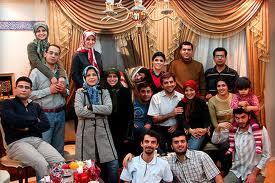Introduction
A stereotype is a statement or a thought that is directed towards a certain group, tribe or types of individuals, seeking to judge the way they live, act or relate to other people and the material world.
There are a lot of stereotypes that exist between the genders in the western and eastern worlds. Different cultural values and factors affect the nature of these different stereotypes (Berry, p. 84)
Eastern and Western Boys/ girls
Stereotypes claim that the girls from the east are well behaved. They are shy and respectful, quiet and smart. They treat their male counterparts with lots of respect, and are highly disciplined towards their parents and elders. They are marriageable unlike the western girls stereotyped as disrespectful; they wear short and tiny clothes exposing most of their body parts; engage into sexual immorality carelessly, talk back to their parents and regularly visit night clubs. Stereotypes also favor the eastern boys who are portrayed as obedient, loyal with great respect to their parents and the elderly. Whereas, the western boys are not disciplined, take drugs and alcohol, and are always rebellious to their parents and elders.
Eastern men and women
Stereotypes also tend to favor eastern men and women over western men and women. It is said that the eastern men are God fearing and make good and faithful husbands to their wives. They protect their families no matter what the cost could be. They are stronger and bolder. The eastern women are exploited, less liberated and greatly depend on their husbands for provision. They are faithful and loyal to their husbands. It is said that the eastern men and women value family. Even though they practice polygamy, they hardly divorce.
Western men and women
However, it is stereotyped that the western men are very modern and give more interest in things like sports and cars than to their families (Al-Ali and Nadge pg 29). The western women are liberated, independent and are usually not even interested in men. They are disobedient and unfaithful to their men.
Generally, the western people have less time and interest to family, community and are mostly atheists. They always form monogamous families but easily divorce.
Conclusion
People are stereotyped on different fields of life and it is a very broad subject to study. Stereotyping is based on generalization, and this makes it inaccurate to all individuals of the discussed group or tribe. Stereotypes can either be positive or negative. Gender stereotyping is a determinant to an unintended, unconscious judgment when relating or communicating with one another (Craighead and Nemeroff, p. 391).




Works Cited
Al-Ali, Nadje. Secularism, Gender and the State in the Middle East: The Egyptian Women’s Movement. Cambridge [u.a.: Cambridge Univ. Press, 2000. Print.
Berry, John W. Cross-cultural Psychology: Research and Applications. Cambridge [u.a.: Cambridge Univ. Press, 2006. Print.
Craighead, Edward, and Charles B. Nemeroff. The Concise Corsini Encyclopedia of Psychology and Behavioral Science. Hoboken, N.J: John Wiley & Sons, 2004. Print.